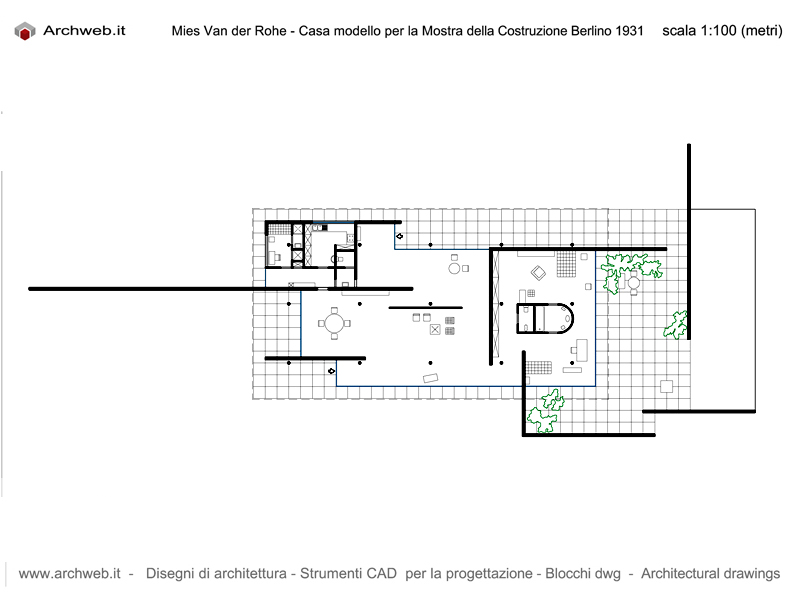Model house at the Berlin Exhibition of 1931
Ludwig Mies Van Der Rohe – Exhibition House, Berlin, Germany, 1931
Location
Berlino, Germania
Year
1931
Architect
L. Mies van der Rohe
The Exhibition House expanded the radical space experimentation that Mies had started with the 1924 Brick Country House Project and carried out in 1928-30 in the German pavilion in Barcelona and in the Tugendhat House in Brno.
The structure was a low straight pavilion, its roof slab supported by a steel skeleton with fifteen columns arranged in a rigid grid. The intersection of the grid was not structural, dividing walls interrupted by expanses of glass. Extending beyond the roof, these walls connected the interior with the surrounding courtyard areas and the reflecting pool, creating what Mies called “adjoining garden rooms“. The design effectively canceled the division between inside and outside, revealing Mies’ interest in blurring the boundaries between architecture and nature. The open plan interior was organized by the arrangement of the furnishings, many of which were designed by Mies. Interior doors were mostly avoided in favor of suspended fabric partitions.
Mies has chosen rich materials such as rosewood, leather and silk for the furnishings, showing that “smaller” must not mean “low quality”. The apartment was a free space, with the arrangement of furniture that defined different areas: dining and work rooms; living and sleeping areas, divided by a library / container; and a bathroom, a kitchen and a closet, all in a space of less than seven by nine meters.
Drawings that can be purchased
How the download works?
To download files from Archweb.com there are 4 types of downloads, identified by 4 different colors. Discover the subscriptions
Free
for all
Free
for Archweb users
Subscription
for Premium users
Single purchase
pay 1 and download 1


































































